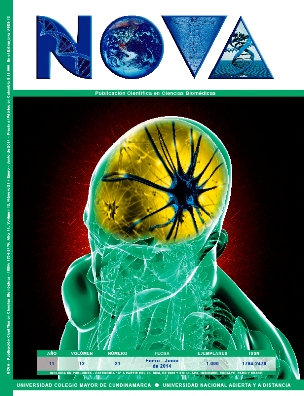NOVA por http://www.unicolmayor.edu.co/publicaciones/index.php/nova se distribuye bajo una licencia Reconocimiento No Comercial- Compartir igual
Así mismo, los autores mantienen sus derechos de propiedad intelectual sobre los artículos,
Declaración de privacidad.
Los nombres y las direcciones de correo electrónico introducidos en esta revista se usarán exclusivamente para los fines establecidos en ella y no se proporcionarán a terceros o para su uso con otros fines.
Trisomy 22 in a newborn infant of 39 weeks
In this report, we present the case of a male patient who was born 39 weeks, the product of third gestation (two previous abortions) with a 38 year old mother and a 46 year old father. The clinical characteristics of the patient include macrocephaly, extensive anterior fontanelle with diastasis recti sagittal suture, ochronosis grayish pavilions dysplastic headphones low-set, short nasal root, simian crease in her right hand and hirsutism. We obtained a computerized axial tomography of skull and a brain magnetic resonance with agenesis of the corpus callosum and dilation of the ASTA occipital of the lateral ventricles. The karyotype in peripheral blood evidence partial trisomy of chromosome 22 (47, XY+22, del (22) (q11.2qter)). The patient required 7 days of hospitalization and was released from the hospital in good condition overall, but with a psychomotor retardation and severe generalized hypotonia. Given the severe structural malformations that are present in this syndrome, the term pregnancy and post birth survival of children with trisomy 22 are very rare events. The case of this patient complements other reports illustrating that trisomy 22 can survive beyond birth.









